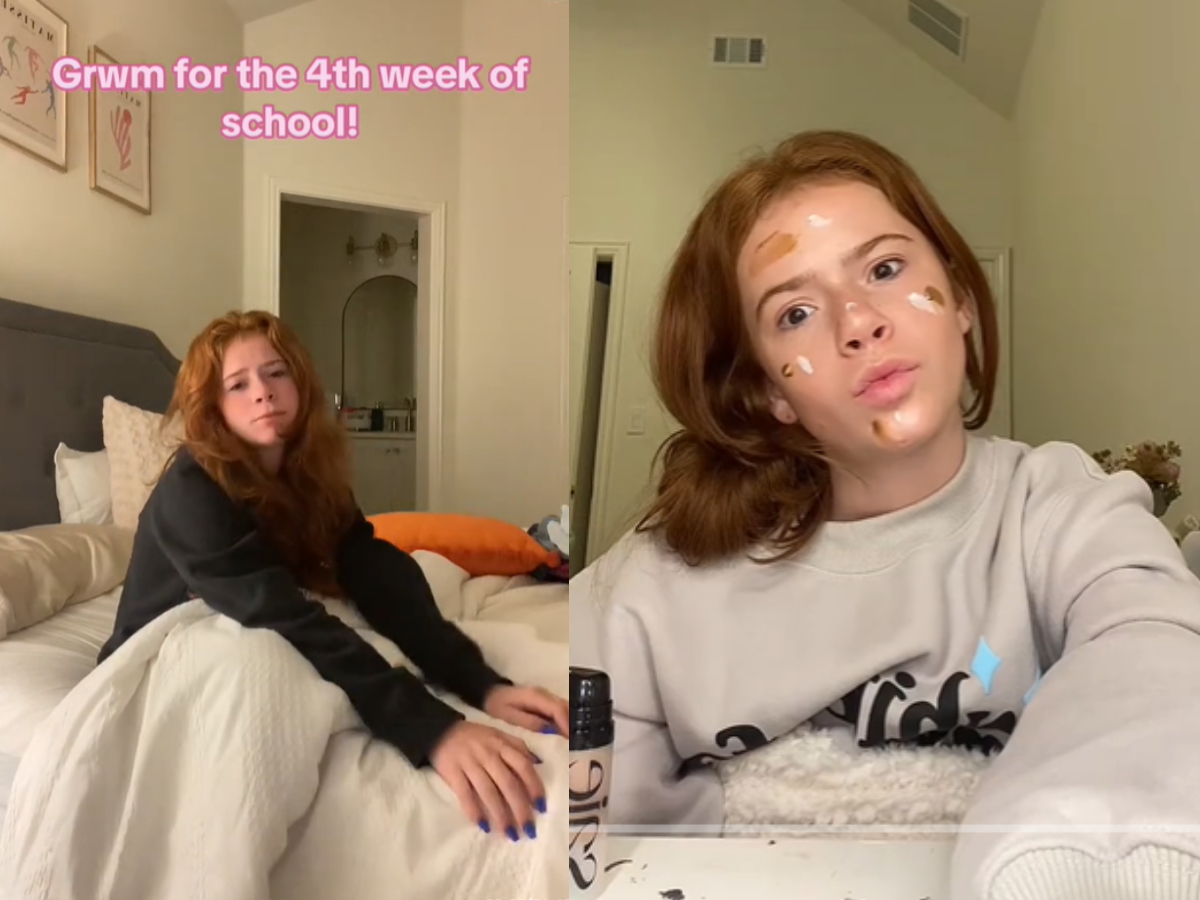First graders dream of beauty shopping at Sephora, and 11-year-old kids understand anti-wrinkle creams better than seasoned adult influencers.
Every day, they apply dozens of products and post their beauty routine on TikTok. What is happening, who is to blame, and why are children afraid of growing old?
Digital Beauty Boom: An Escalating Trend
Amid playful beauty sleepovers and 12-step facial rituals lasting up to five hours, kids are not just experimenting with skincare – they’re making it a digital spectacle. The hashtag #grwm (get ready with me) is now one of the most popular on TikTok.
Currently, it has more than 146.5B views. The bulk of those millions of views come from teenage influencers reviewing creams or showcasing school makeup. Some, like 13-year-old Harper Zillmer from Texas, have even risen to social media stardom.
The “Get Ready with Me” TikTok video Harper made went viral, garnering over 5 million views. It catapulted her into the spotlight, reaching one million followers in just a month. The mass appeal of TikTok beauty videos has contributed to a cultural shift where skincare products become must-haves for the average kid.
“Even my 11-year-old stepdaughter, armed with a plush headband, can rattle off the ingredients of the latest skincare products better than a Sephora consultant,” notes Hannah, a Health Reporter reader.
While heritage luxury brands like Loro Piana and Brunello Cucinelli scramble to capture the hearts of teenagers, cosmetic giants like Glow Recipe, Laneige, Bubble, Touchland, and others are doing a great job. Their vibrant packaging and quirky names, such as Drunk Elephant, seem tailor-made for the TikTok spotlight.
Parent and Expert Concerns Grow
Dermatologists caution tweens against using excessive skincare products. They warn that overexposure to certain ingredients can lead to skin damage, such as premature aging and skin cancer risk.
Dr Rosmy Barrios, medical advisor for Health Reporter, said: “I recommend avoiding products with retinol and vitamin C for young skin. The reason is that teenagers may not need these treatments, and gentler alternatives can be substituted. For example, mild cleansers, non-comedogenic moisturisers, and products with ingredients like hyaluronic acid or niacinamide can be considered. These options are generally well-tolerated by young skin and provide a more balanced and suitable skincare regimen for adolescents.”
Dr Barrios advises parents to be vigilant about the products their children use for their skin. As this skincare craze gains momentum, it raises questions about whether it fosters a generation overly focused on aging and beauty standards.
The impact of such trends on young individuals’ mental health and self-esteem remains a topic of concern for parents and mental health experts alike.
Aura De Los Santos, clinical psychologist and Health Reporter expert, said: “Routines and self-care can improve mental well-being, but young minds are still developing, so it’s wise to consider how such trends might affect them. Focusing too much on looks can stress kids. This might affect their confidence and how they feel about themselves. I recommend parents talk to their kids, making sure they know they’re valued for who they are inside, not just how they look outside.”
Read the current issue of our digital magazine below:
- For more news and updates, subscribe to our weekly newsletter
- Follow us on Instagram
- Like us on Facebook
- Connect with us on LinkedIn


Leave a comment